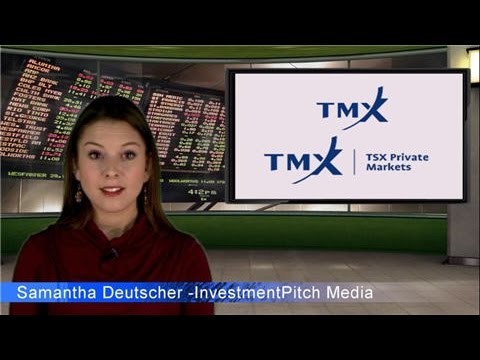The TSX Venture Exchange
Post on: 16 Март, 2015 No Comment

Raises Another $1 Billion in June
Comments ( )
By James West
Friday, July 20th, 2007
TSX Venture listed companies were the beneficiaries of over CA$1 Billion in the month of June, bringing the total amount raised for 2007 to almost $6 Billion. Thats a billion dollars every month.
Last year, the combined TSX Group, which includes the TSX Venture, TSX, and NEX exchanges traded in excess of $ 1 Trillion in transaction value.
Since 2002, the TSX Venture has appreciated in value by in excess of 218%, which outperformed every other major stock exchange on earth by a factor ranging from 2 to 10.
What am I getting at here?
If you look at the comparative performance of the DJIA, the S&P500 and any other major index, the bottom line is this:
The TSX Venture Exchange is the greatest stock market on earth, in terms of appreciation and performance.
One of the greatest realities about the TSX Venture Exchange is its incompatibility with the requirements of huge institutional brokerage firms, who regularly compete with their clientele to extract profit from the equities they recommend.
TSX Venture issuers typically have two things in common:
1. Low share issuance: Since most of these companies are funded and organized as start-ups, they dont come out of the chute with two or three hundred million shares. This means that the big banks cant acquire a sufficiently large position to redistribute to their thousands of account holders, charging a commission for each transaction. This means that you, the individual investor, armed merely with an online discount brokerage account and a good advisory newsletter. can sidestep the marketing ballyhoo and misleading grand sweeping generalizations of the major brokerages, and trade for yourself. Its not only profitable (when done correctly), but its a hell of a lot of fun.
2. Low share price: The massive public relations and perception management machine that is the mainstream media is controlled by its shareholders the major investment banks and financial institutions. Thats why there is so much negative publicity around about penny stocks, and it is also why many major brokerage firms (Edward Jones, for example) prohibit their brokers from buying or selling any stock under $5 for their clients. They cite the high risk and unsuitability of these low price companies in their literature, and instead put their clients money into blue chip corporations like Enron and Tyco.
The major brokerages work on commission structures. That means a percentage of each transaction value. So if MEGAcorp wants to raise $200 million at $25 a share, and VENTUREcorp wants to raise $5 Million at $0.50 a share, guess which company is a more suitable risk for the Investment Banks clients?
It certainly wont be VENTUREcorp, whose total commission yield, (assuming a 7% commission) is only $350,000. Why bother with VENTUREcorp when MEGAcorps transaction will deliver (even assuming a reduced commission in view of the sheer size of the transaction of 5%) $10,000,000.
Plus, what about the commission when the shares are redistributed to their clients accounts?
Theres far more to be made from the distribution of 8 million $25 dollar shares than there is from the distribution of 10 million shares at $0.50 a share.
So you can see why the major investment banks have a very strong incentive to find penny stocks dangerous and high risk.
Lets face it any investing is high risk.
As Mark Twain once said, the only sure fire way to double your money is to take a $100 bill out of your pocket, fold it in half, and put it back.
Heres a quick history of the TSX Venture and how it came to be:
1852
A group of Toronto businessmen met on July 26, 1852 with the intention to form an Association of Brokers. Although they may have traded in shares that were available at that time, no official records remain of the groups’ transactions.
1861
On October 25th, 24 men gathered at The Masonic Hall. A resolution was passed that day and Toronto Stock Exchange was born. The cost of membership was $5.00. In its early years the Toronto Stock Exchange trading volume was very modest, amounting to two or three transactions daily. Trading hours were limited to daily half-hour sessions and the trading list consisted of 18 securities.














